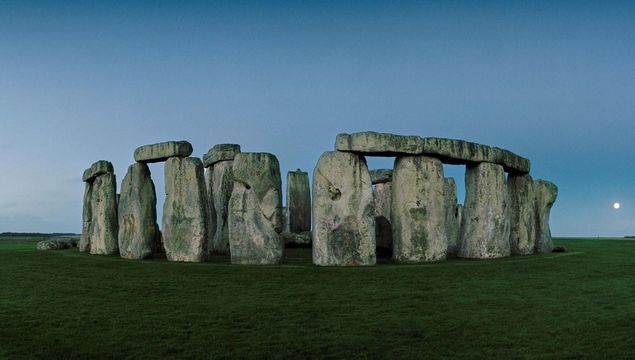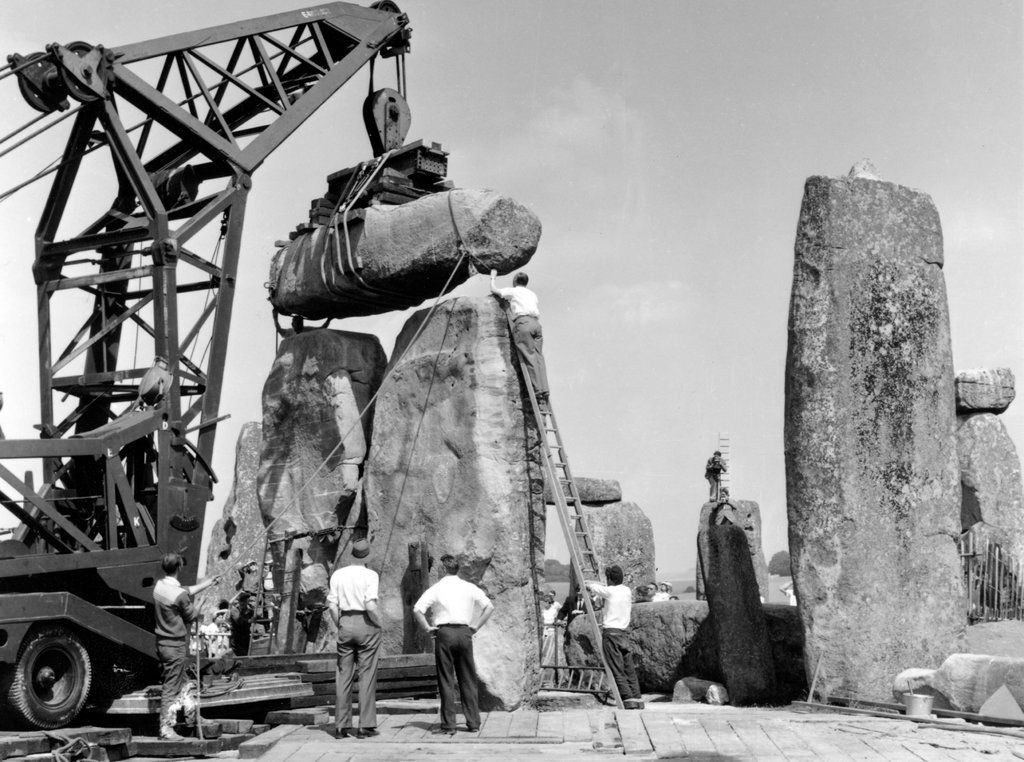
StonehengeImage: National Geographic
A piece of Stonehenge, missing for more than 60 years, was finally returned in 2019 and may provide clues to the monument's origins.
The missing stone, said to be roughly shaped like a broomstick, was taken by Robert Philips, a Briton who was working with a diamond-cutting business at the time and took part in repair works at Stonehenge in 1958. The repair works were undertaken to raise one of the trilithons, the iconic three-piece standing stones, that had fallen to the ground. The work included drilling ring-shaped holes into the stone, and it produced three-foot cylinders. One of which Philips took and kept in his office.
Read more: 7 top tips for visiting Britain
“The last thing we ever expected was to get a call from someone in America telling us they had a piece of Stonehenge,” Heather Sebire, a curator with English Heritage, said in an emailed statement, in May 2019. “We are very grateful to the Phillips family for bringing this intriguing piece of Stonehenge back home.”
His sons returned the stone in May 2018, the statement said, but English Heritage did not make an announcement until the stone’s significance was understood.
The stone is set to help researchers finally understand the origin of the big stones that make up Stonehenge, which stands in Southern England at about 13 feet high and 7 feet wide.
Workers raising three pieces of a standing stone in 1958 after it had fallen to the ground at Stonehenge (English Heritage, via Reuters)
Discovering the origin of Stonehenge
Researchers at Brighton University have been trying to analyze the site to discover where the large stones came from.
“To my knowledge, it’s the only piece of sarsen stone that we can definitively link to Stonehenge,” David Nash, a professor of physical geography at the University of Brighton, who leads the research, said while speaking to the New York Times. Sarsen is a term for the type of sandstone used at Stonehenge.
Read more: How a 104-year old telegraph machine was found on the Lusitania
According to Nash, lumps of Stonehenge can be found in museums around Britain, but the just-returned cylinder is the only one that researchers can say with any certainty came from a particular block of stone.
“Conventional wisdom suggests that the big sarsen stones are local to Stonehenge,” Professor Nash said, considering that they had to be transported to the site and laid out in a circle. Some historians believe that the circle in Wiltshire, England, may have been built for some sort of ritual more than 4,000 years ago, using sarsen for the bigger blocks and bluestone for the smaller ones. In 2015, researchers confirmed the source of the bluestone to be a quarry in Wales, but the provenance of the stone has not yet been identified.

During the conservation work in 1958, ring-shaped drills were used to extract cores like this one, returned last year (English Heritage, via Reuters)
While it seems extreme to think anybody could hold on to such a piece of history undetected for so long, Professor Nash said the approach to conservation was different in the 1950s.
“Normally, pieces from there would have been thrown out,” he said, referring to the work Mr. Phillips had carried out. “Nowadays, we would have kept it.”
Now that this piece has been returned, English Heritage has issued an appeal to anyone else who may be holding on to a piece of Stonehenge to return it.
“The other two Stonehenge cores may still be out there somewhere, and if anyone has any information, we’d love to hear from them,” said English Heritage.
Read more: Do new documents show that the White Queen died of plague?
* Originally published in May 2019.





Comments